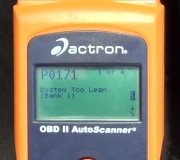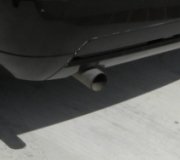Nope. My experience with GM is they like to build and sell assemblies. This includes their very nice '86 and older generators with the built-in voltage regulator, and their HEI distributors with the built-in ignition module and ignition coil. As stated by one of their representatives in a training class, they do that because their dealership mechanics didn't know how these systems worked when they were introduced. These items are a simple drop-in replacement. With the HEI distributor, you just plug in one 12-volt wire, along with the spark plug wires, and you're done. A few years later it took the aftermarket suppliers to come up with individual replacement parts, tools, and the instructions to repair these assemblies rather than replace them.
Most other manufacturers design and sell the individual parts, such as Chrysler's alternator and separate voltage regulator. You just buy the part that needs to be replaced, not the entire assembly.
If the ignition system is working properly, changing to a different system won't affect how quickly the engine starts. In the case of my Volare, since the day it was brand new, if I'd run it every day, it always fired right up, including after sitting for a week over Christmas break, then leaving for college when it was 30 degrees below 0 F. If it sat longer than that, the gas would evaporate out of the float bowl. That resulted in a long crank time of up to five seconds. There is a service bulletin to address that, and I have the part, but never bothered to install it. That had nothing to do with spark. Once that engine was run for the first time that day, it started so quickly the next time that you can barely even hear the starter motor.
When it comes to retrofitting a part from a different manufacturer, the only thing I've ever seen is using a Chrysler starter on a GM race engine. GM and Ford starters are direct drive and draw around 300 amps to get started spinning, then they drop down to around 200 amps. That's for a typical passenger car engine. With the high compression of race engines, it was too difficult for those starters to crank the engines, so they retrofitted a Chrysler starter which has a gear reduction assembly. They draw closer to 150 amps when spinning. In later years, either GM or the aftermarket suppliers developed a high-torque starter so the Chrysler swap was no longer necessary.
As far as swapping distributors, I can share what I know, not that it will help. First you have to look at the length of the body, and whether it's the right length to reach the camshaft. Next is the diameter where it bolts to on the hole in the block. There will be an o-ring around it to keep oil from leaking out. The biggest issue is the drive gear. GMs use a helical gear that meshes with a gear cast as part of the camshaft. It can be installed with that shaft in about two dozen orientations. Chrysler distributors have what looks like a flat-blade screwdriver on the end of the shaft. It can go into its drive gear one of two ways. That drive gear meshes with the drive gear on the end of the camshaft, but it also has a long shaft that goes down to run the oil pump. That shaft isn't part of GM's drive system.
There may be kits out there to do this type of modification, but I've never looked into this myself. Be aware too there's three different distributor applications. I've only had one from a "big block" 440 c.I. The 426 and the 426 Hemi use one with a slightly longer shaft. Your 400 c.I. And all the other big blocks use one with a shorter shaft. The small block V-8s including up to the 360 c.I. Use a different distributor. I don't know how they compare to those first two. The six-cylinder distributors are very different and not part of this wondrous story.
If this modification is something you are able to pursue, I would recommend looking for an early version with the vacuum advance units built in. Those without on the newer models used a separate computer module to create timing advance. Those computers would require you to add a whole bunch of sensors and would not be practical. Also, those computers from the late '80s through the mid '90s had an extremely high failure rate, as in 99 percent. They are the single biggest reason why today yet, a lot of people think they're going to "reset" or magically fix something by disconnecting a battery cable for a few minutes. That did work sometimes with those computers, but that is not a recommended practice today, and rarely solves anything.
I've also never heard of just using a GM ignition module with a Chrysler distributor. If that would work electrically, it would be a more practical alternative to using the whole GM distributor. Right off the bat I have two questions. The first has to do with it connecting to the ignition coil. That's done under the distributor cap on GM distributors, and externally on Chryslers. The other issue is GM's modules must be mounted on a large aluminum plate with heat-sink compound in between for good heat transfer. Without that, the module will overheat in short order and short. Even in the distributor, failure to use that special grease results in numerous repeat module failures.
Let me know how you proceed. If this works, it would be something to add to my memory banks.
Monday, April 10th, 2023 AT 6:28 PM



